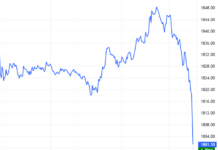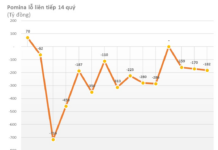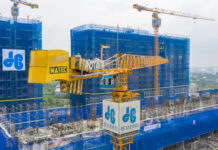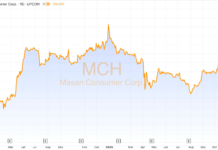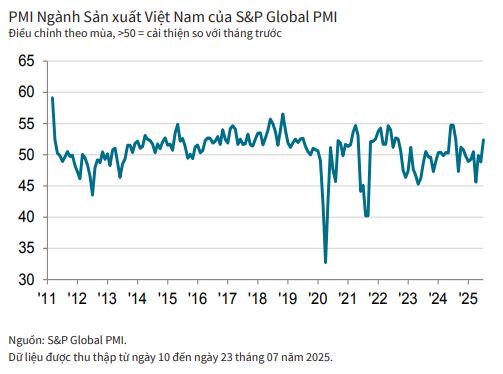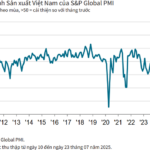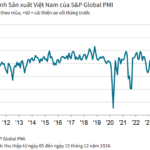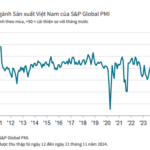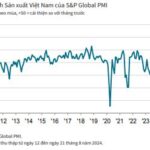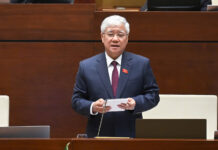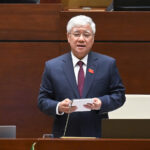Vietnam’s manufacturing sector returned to growth in July as renewed increases in new orders supported a faster rise in output. This was despite ongoing weakness in export sales due to the impact of tariffs. Purchasing activity also picked up, while employment was broadly stable.
There were some reports of difficulties in sourcing raw materials, which led to supplier delivery delays, lower stocks of inputs, and higher purchasing costs.
The S&P Global Manufacturing Purchasing Managers’ Index™ (PMI®) for Vietnam rose to 52.4 in July, up from 48.9 in June and above the 50.0 no-change mark for the first time in four months. The latest reading indicated a modest improvement in the health of the sector. In fact, the strengthening of business conditions was the most marked in almost a year.
The improvement in operating conditions coincided with a return to growth of new orders in July. New orders rose for the first time in four months, and at the fastest pace since last November amid reports of improved customer demand.
However, some survey respondents highlighted the negative impact of US tariffs on their ability to secure new work. In fact, new export orders continued to fall due to tariffs, thereby extending the current sequence of decline to nine months.
The rise in new orders supported a further increase in output during July. Production has now risen in each of the past three months, with the latest expansion being solid and the fastest in 11 months. Higher output requirements encouraged companies to step up their purchasing activity. The rate of growth in buying levels was also the quickest since last August.
Meanwhile, employment was broadly stable as staff numbers continued to fall amid rising spare capacity following the recent period of declining new orders. However, the rate of reduction was the softest in nine months as higher production needs limited the extent to which workforce numbers could be cut.
Backlogs of work continued to fall, although the rate of depletion was the weakest in the seven-month sequence of reduction.
Although input buying increased again, pre-production inventories fell further as survey members reported challenges in procuring raw materials. However, the rate of depletion was the weakest since last December. Stocks of finished goods also declined in July.
Raw material shortages led to a further lengthening of suppliers’ delivery times. The deterioration in vendor performance was marked and only slightly softer than in June.
Difficulties in sourcing materials, especially from abroad, led to a rise in input costs at the start of the second half of the year. Purchase prices have now risen in each of the past two months, with the latest increase being sharp and the fastest since the start of 2025.
Output charge inflation also quickened in July as companies passed on higher input costs to clients. This was the strongest rise in selling prices in seven months, but only marginal.
Although manufacturers remained optimistic that output would rise over the coming year, business confidence eased to a three-month low in July and was well below the historical average for the series. Positive sentiment was underpinned by hopes of more stable economic conditions, new product launches, and expectations of new orders. Meanwhile, concerns surrounding the impact of US tariffs weighed on output projections.
Andrew Harker, Economics Director at S&P Global Market Intelligence:
“The July PMI data showed Vietnam’s manufacturing sector recovering from the disruption caused by news of US tariffs in recent months. Although tariffs continued to weigh on new export orders, companies were able to secure enough new work from other sources to ensure that total new orders rose.
A key feature of the latest survey was the impact of difficulties in sourcing raw materials. Companies reported that this led to widespread supplier delivery delays, lower stocks of purchases, and rising cost pressures. If raw material supply continues to cause issues in coming months, we may see the pace of expansion in the manufacturing sector constrained.”
– 08:10 01/08/2025
“PMI Surges Past 52: Vietnam’s Manufacturing Sector Booms Despite US Tariff Turbulence”
The Vietnamese manufacturing sector rebounded in July 2025, with the PMI index reaching an impressive 52.4 points. This marks the first time in four months that the index has crossed the 50-point threshold, indicating a return to growth. Notably, this expansion occurred despite ongoing weaknesses in export activity due to US tariff impacts.
“Vietnam’s Manufacturing Sector Loses Momentum in Late 2024”
The Vietnamese manufacturing sector faced headwinds in the final month of 2024, as the Purchasing Managers’ Index (PMI) dipped from 50.8 in November to 49.8 in December, slipping below the 50-point threshold for the first time in three months. This indicates a mild deterioration in business conditions, presenting a challenging landscape for the industry as the year drew to a close.
“PMI Surges to 50.8 in November, Marking the Second Consecutive Month of Improvement Post-Yagi”
The S&P Global Manufacturing Purchasing Managers’ Index (PMI) for Vietnam remained above the 50.0 no-change mark in November, signaling a second consecutive monthly improvement in business conditions following the disruption caused by Storm Yagi in September. However, with the index falling from 51.2 in October to 50.8, the health of the sector strengthened only modestly.
August 2024 PMI: Output and New Orders Continue to Surge Significantly
The S&P Global Vietnam Manufacturing Purchasing Managers’ Index (PMI) posted 52.4 in August, down from 54.7 in July, signaling a strong improvement in business conditions midway through the third quarter. Operating conditions have strengthened over the past five months.

